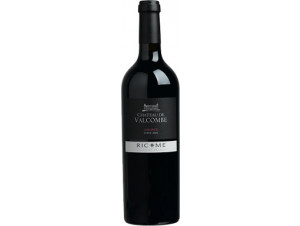You have no items in your shopping cart.
Wine Costières-de-Nîmes
Between the Cévennes, the Rhône and the Camargue, the Costières de Nîmes offer you typically Rhone wines, impregnated by very dry sunny summers, but regularly subjected to intense rainfall. The result is wines of all three colours, typically Mediterranean and with an intense maritime influence. Read more on Costières-de-Nîmes
-
Top Selling
-
Top Selling
-
Top Selling-31%
- -31%
- -21%
- -20%
- -10%
Appellation Costières-de-Nîmes
More than 2,500 years of history for the Costières-de-Nîmes AOC
We owe the Greeks the culture of the vine in the region five centuries before Christ. The Romans then took charge of its development, before the monks took up the torch. The abbey of Saint Gilles then became the supplier of the popes installed in Avignon.
The 17th century saw the explosion of this vineyard, thanks to the development of the means of transport, with in particular the expansion of the railway and the construction of the Canal du Midi. Unfortunately, the arrival of phylloxera in 1864 devastated everything in its path. It was not until the aftermath of the First World War that the Minister of Agriculture at the time commissioned Philippe Lamour, a brilliant Parisian lawyer, notorious resistance fighter and landowner in the Costières de Nîmes, to restructure the wine region.
He worked together with Baron Leroy who was behind the revival of wine appellations in France. This is how the VDQS, the Vins Délimités de Qualité Supérieure, were born. In 1989, Costières du Gard became the AOC of Costières de Nîmes.
The Costières-de-Nîmes AOC produces predominantly red wines
The Costières de Nîmes domain extends over twenty-four communes, north of the Camargue and represents 4,500 hectares. The terroir extends to the edge of the Languedoc over ten kilometres wide between Saint-Gilles and Beaucaire, and forty kilometres long between Meynes and Vauvert. This is the extreme south-western part of the Rhône valley.
All three colours of wine are present in Costières de Nîmes. The originality is the obligation, in each of them, to assemble at least two grape varieties. There is 10% white, 10% rosé and the rest red.
The grape varieties of Costières de Nîmes offer whites based on white grenache, roussanne, marsanne, clairette, bourboulenc, viognier, macabeu and vermentino. The reds and rosés are made from grape varieties of syrah, mourvèdre, grenache, as well as carignan and cinsault, which are in the minority.
Costières-de-Nîmes are very fruity wines, with a strong southern character
The Costières de Nîmes whites have a bright golden yellow colour. They are lively and flavoursome, and roll off the palate. Delicate palates appreciate their fruity notes, which are always generous, distilling very fresh flavours of citrus, white flowers and exotic fruits.
You are advised to wait three years before tasting the Costières de Nîmes whites, to give them time to develop their rich yellow fruit flavours, such as peach or apricot. With time, you will also discover bouquets reminiscent of honey.
The beautiful soft pink of Costières de Nîmes rosés is eye-catching. If they are rare, the rosés of Costières de Nîmes are no less delicious. They are particularly sought after by lovers of red fruit. If you have a predilection for strawberries and raspberries, these full-bodied wines with a long finish will delight your sweet tooth.
The reds benefit from the compulsory blending to cumulate the qualities of the different grape varieties. Their colours are varied, going from the purest ruby to intense garnet, while declining all the intermediate nuances. They can be drunk immediately if you are looking for the freshness of red fruits and wild berries, such as elderberry and blackberry. If you wait between three and five years, you will discover new aromas that the ageing will have revealed. It is then a festival of more typical flavours of sweet spices, black olives, violets and other flowers of the garrigue.
The red wines of Costières de Nîmes linger on the palate, thanks to a fleshy texture that perfumes your palate with its delicious tannins whose fragrance evokes liquorice.
Costières-de-Nîmes can be enjoyed at any occasion
Red Costières de Nîmes are best enjoyed with red meat and game. They also like carpaccios and goat's cheese. The rosé is typically associated with summer meals, outside, for your barbecues and picnics. As for the white, it goes wonderfully with fish in all its forms, but also with pork in honey or beer. Think about it when it comes to cheese, especially goat's cheese.
The domains to discover in the Costières-de-Nîmes appellation
The Galus estate
Domaine Galus has an evocative Latin name, as it means both de Gaulois and the rooster. The vineyard of Domaine Galus covers nine hectares on the Pazac plateau. Since 2009, the farm has gone into organic farming. The red wines of Domaine Galus lend themselves to all opportunities. They are elegant and intense, imbued with the flavours of fruit, and always convivial. You have the choice between four vintages: Lina rosé dedicated to your picnics and barbecues; Galvs is more devoted to dishes in sauce and roasted meats; G. reveals itself on red meats, game and goat's cheese; and the cuvée Salomé is to be reserved for your sweet desserts and your festive meals.The M. Chapoutier estate
Michel Chapoutier's estate has been operating biodynamically since 1991. The idea of biodynamics is simple: a plant never lives alone. Applied to the cultivation of the vine, biodynamics dispenses with any chemical products and it is the natural elements that preserve the balance. The wines of the M. Chapoutier estate offer a very wide pallet of flavours, in the three colours and restore the best of the Costières de Nîmes.
Vallée du Rhône appellations
Côtes-du-Rhône-Villages Laudun
Côtes-du-Rhône-Villages Massif-d'Uchaux
Côtes-du-Rhône-Villages Plan-de-Dieu
Côtes-du-Rhône-Villages Rochegude
Côtes-du-Rhône-Villages Sablet
Côtes-du-Rhône-Villages Séguret
Côtes-du-Rhône-Villages Signargues
































 TWIL - Achat de Vin
TWIL - Achat de Vin


